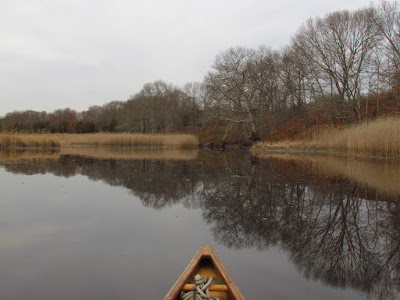I head upstream into river that I've not seen. There is a good current, but it is only too fast to paddle against when it is also too shallow to paddle in. I don't need to wade until I get to my first log crossing. After that, it is a bit of wading every few hundred yards. Like I said, a busy river. No time for contemplation, eyes watching the bottom, watching the bank, peering up around the next bend, watching for animals. I flush a couple of great blue herons and a few pairs of mergansers. The next log crossing is an over-under...the canoe goes under the log, I go over the top.
This river was a mill river...cutlery mills mostly. It doesn't show the beating that it took from metal and plating operations, but I can sense it. It still runs through the towns that built up around those mills, so it doesn't get a full break. I decide to age my photos when I get done...the river has something old about it that doesn't come through in the camera. I suppose an old photo makes the river appear the way I would rather see it.
 |
| great blue heron in the reeds |
In this current, one would normally expect 2:1...twice as long up as it takes to return. But, with so much wood in the river, the return is not much faster. But, it is a chance to play with ferrying the canoe...aiming it and back paddling so that the river current does most of the work. Done right, it can be so graceful that there is no more effort than an occasional dip of the paddle.
It is a round trip of less than 5 miles. It takes 2-1/2 hours.
Quinnipiac River upstream from Quinnipiac Street.






































